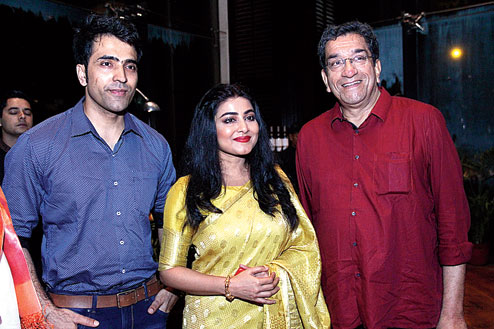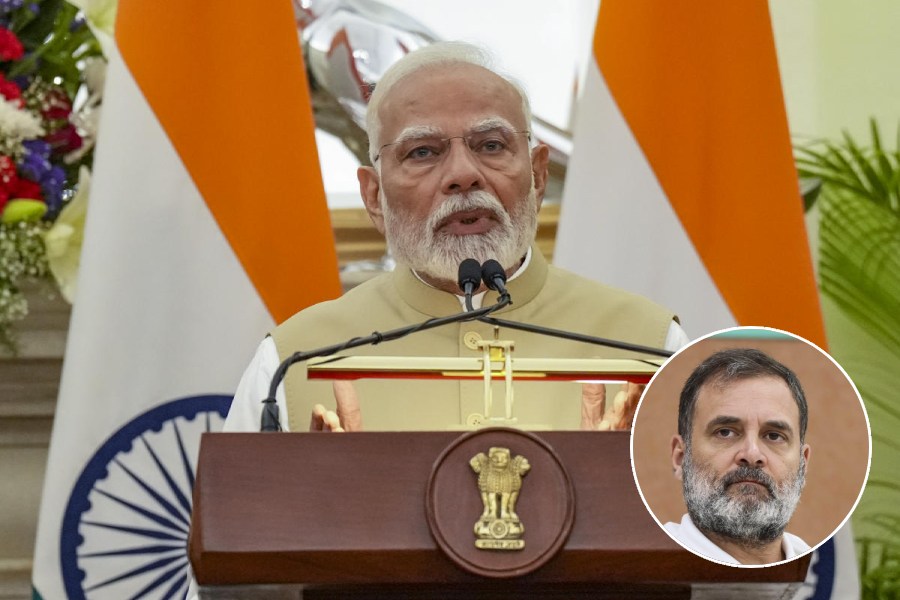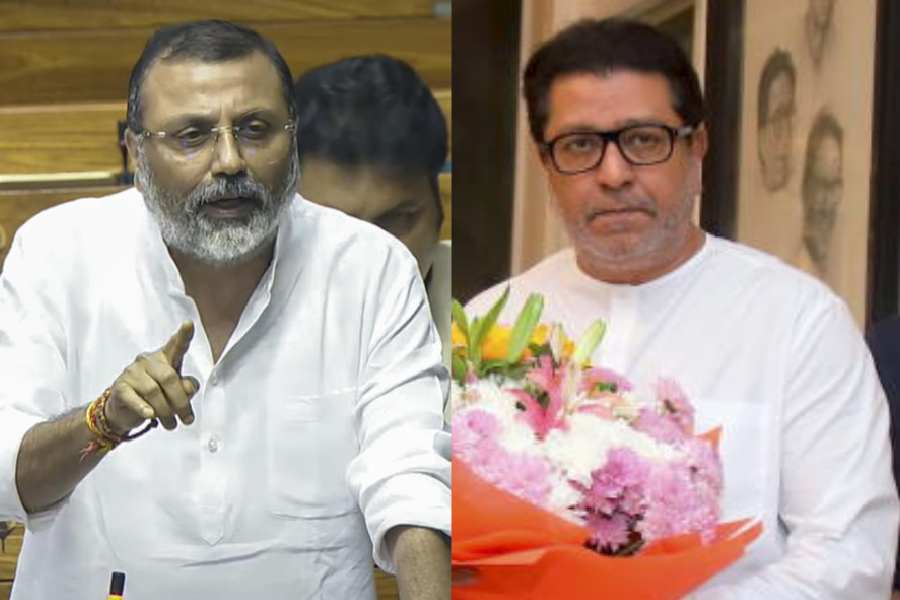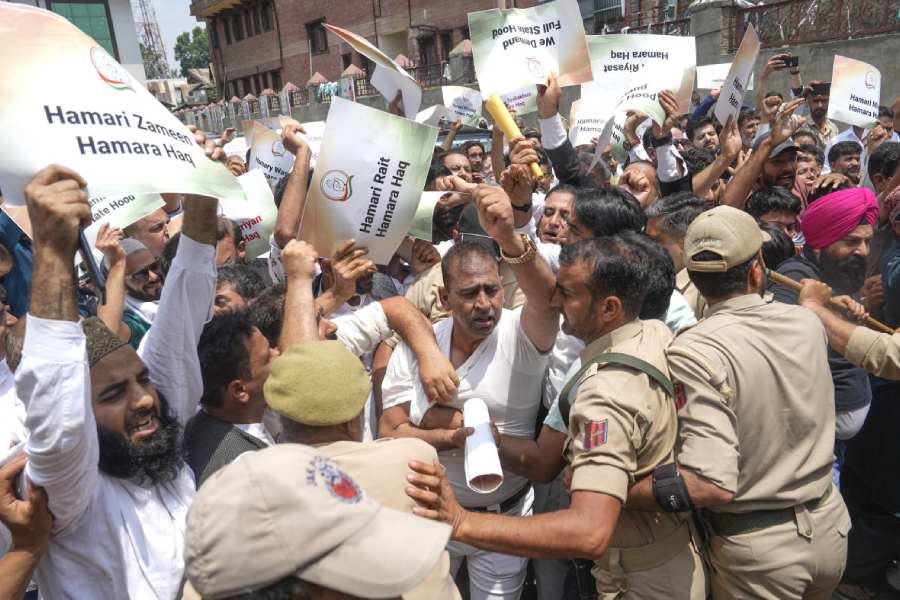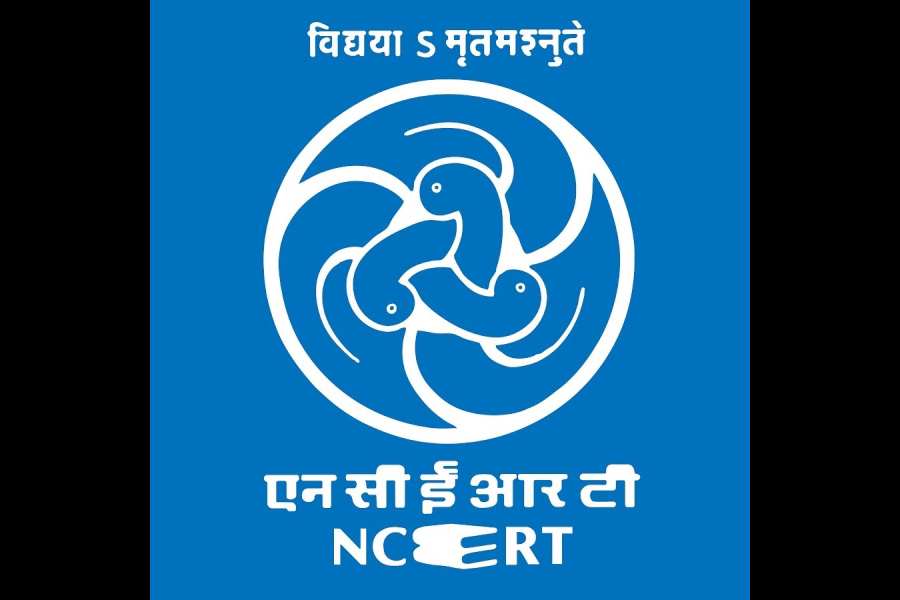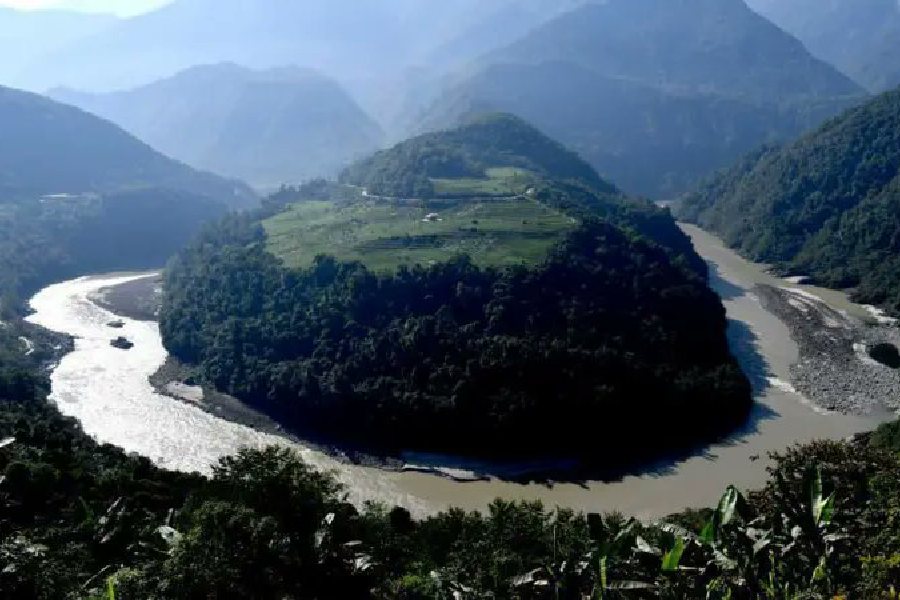
successful run of the film. Pictures: Koushik Saha


Meghnadbodh Rohoshyo is a wonderfully parlous film, uncertainly and interestingly poised between a high-octane tightrope walk and a more meandering one in the park. Boldly scripted, it sparkles and fizzes with the wit and humour that is director Anik Datta’s hallmark. It bubbles with a rare literary sensibility, crammed full of allusions and clever intertextuality that start with its title but doesn’t quite end there. Above all, the film packs in some sterling performances by Gargee Roychowdhury, Saayoni Ghosh, Sauraseni Maitra, Sabyasachi Chakrabarty and Abir Chatterjee. However, it is Kalyan Ray’s bijou role as a raconteur with a shady past that really stood out for me.
The invite
The literariness of the film begun with the clever design for the invitation I received for the premiere show. It was a hardbound copy of Michael Madhusudan Dutt’s magnum opus Meghnadbodh Kabyo, the same that features on the poster. This set in motion expectations that the film did not eventually disappoint.
Genre-hopping film
The film is part whodunit and part why-the who-did-it. It is this oscillation between sub-genres that is at once the film’s great strength and its Achilles heel. Celebrated author of science fiction, Asimava Bose (Sabyasachi), is back in his jonmobhumi Calcutta to escape the chilly winter of his kormobhumi Oxford, where he now lives and writes. But his past offers no escape. An anonymous gift he receives on his birthday — a copy of the same Meghnadbodh Kabyo that I received as invitation to the film — sends the glib globetrotter author on a downward spiral of depression and anxiety, and he eventually disappears.
This brings his large and complex family — Asimava is into his second marriage to actress Indrani (played with great aplomb by Gargee), which includes their children (Sauraseni and Vikram Chatterjee) from previous partners — and wide circle of friends closer together but also opens up fissures. All of Asimava’s circle share various levels of intimacy among themselves (including the stepchildren who are teetering on the brink of an incestuous relationship), and therefore have secrets to keep from one another.
More Poirot and less Holmes
This large cast of chatty and catty characters makes MBR a somewhat crowded film at times, with too many storylines to follow, many of which are not followed through and some which are, such as the near escape Asimava has on a road mishap, turn out to be red herrings. And there are probably too many of these.
MBR is very much in the mode of a classic parlour detective film, more Poirot and less Holmes, especially not the Downey Jr or Sherlock variety. No wonder its best moments are when the cast and camera are indoors, in fast-disappearing south Calcutta townhouses with art deco furniture, or when the scene is set in grand old clubs. The dialogues — while not quite in the ethereal league of Bhooter Bhobishyot — keep the atmosphere warm and taut even when the outdoor action sequences falter at times.
Shots of Gautam Halder performing Meghnadbodh Kabyo on stage have been gorgeously shot and there were moments I felt if this element was better used, MBR the film could have approached the intertextuality across performative genres of the kind Carlos Saura achieves with Tango.
Looking forward
The film’s treatment of the Naxalite movement is sensitive without being sentimental or judgmental. This is the second time Anik Datta has thumbed through this chapter of modern Bengal’s history that still casts a long shadow on its current state, but without really pausing to ponder and look deep into Naxalism’s Manichaean heart. I look forward to the time when Datta will parse open that subject, and I have a premonition that first Bhooter Bhobishyot and now Meghnadbodh Rohoshyo are trailers for what is yet to come from a director I admire immensely. He could set out on that journey with Neel Mukherjee’s The Lives of Others perhaps?
DC is director, British Council East and Northeast India




